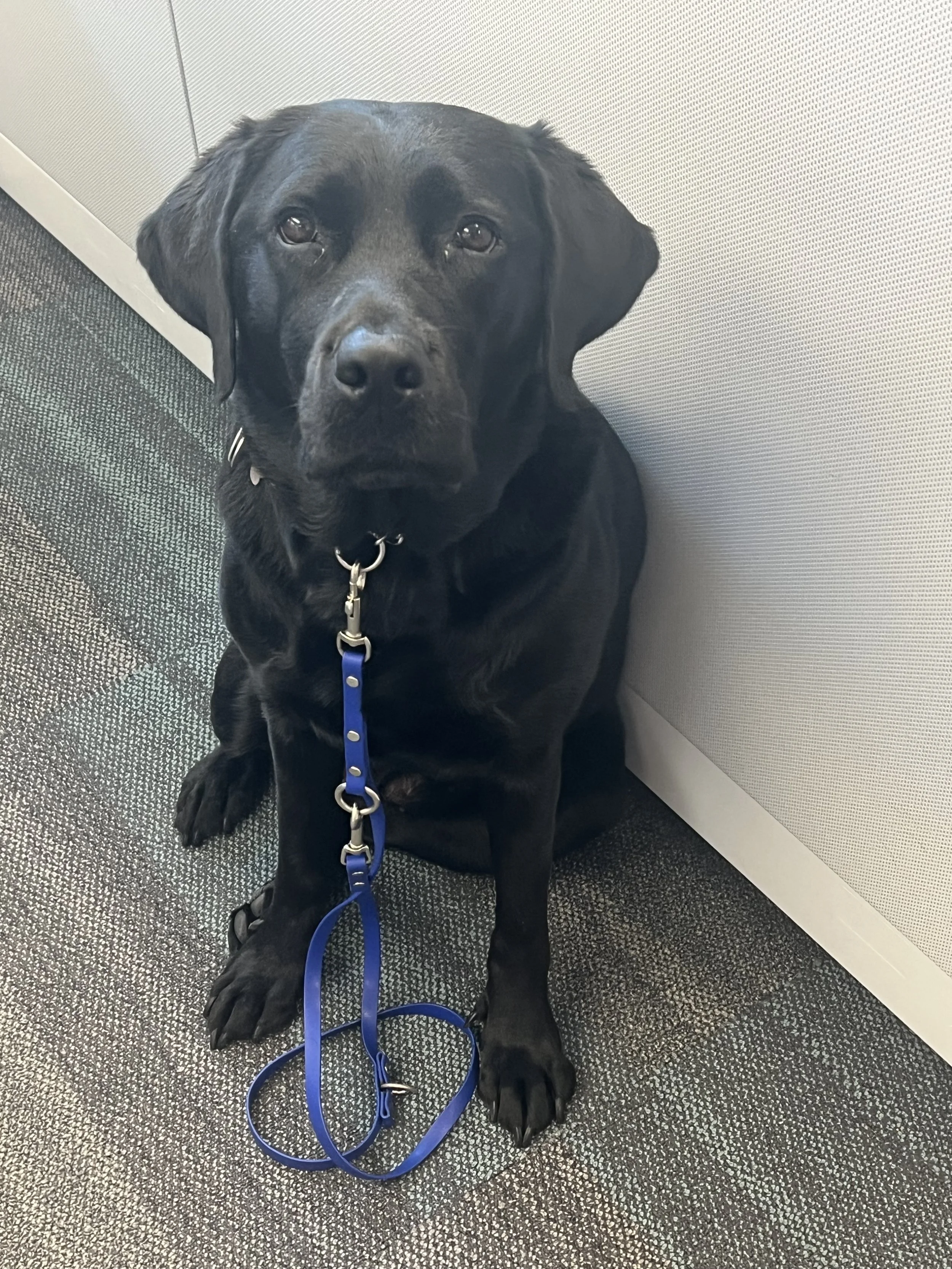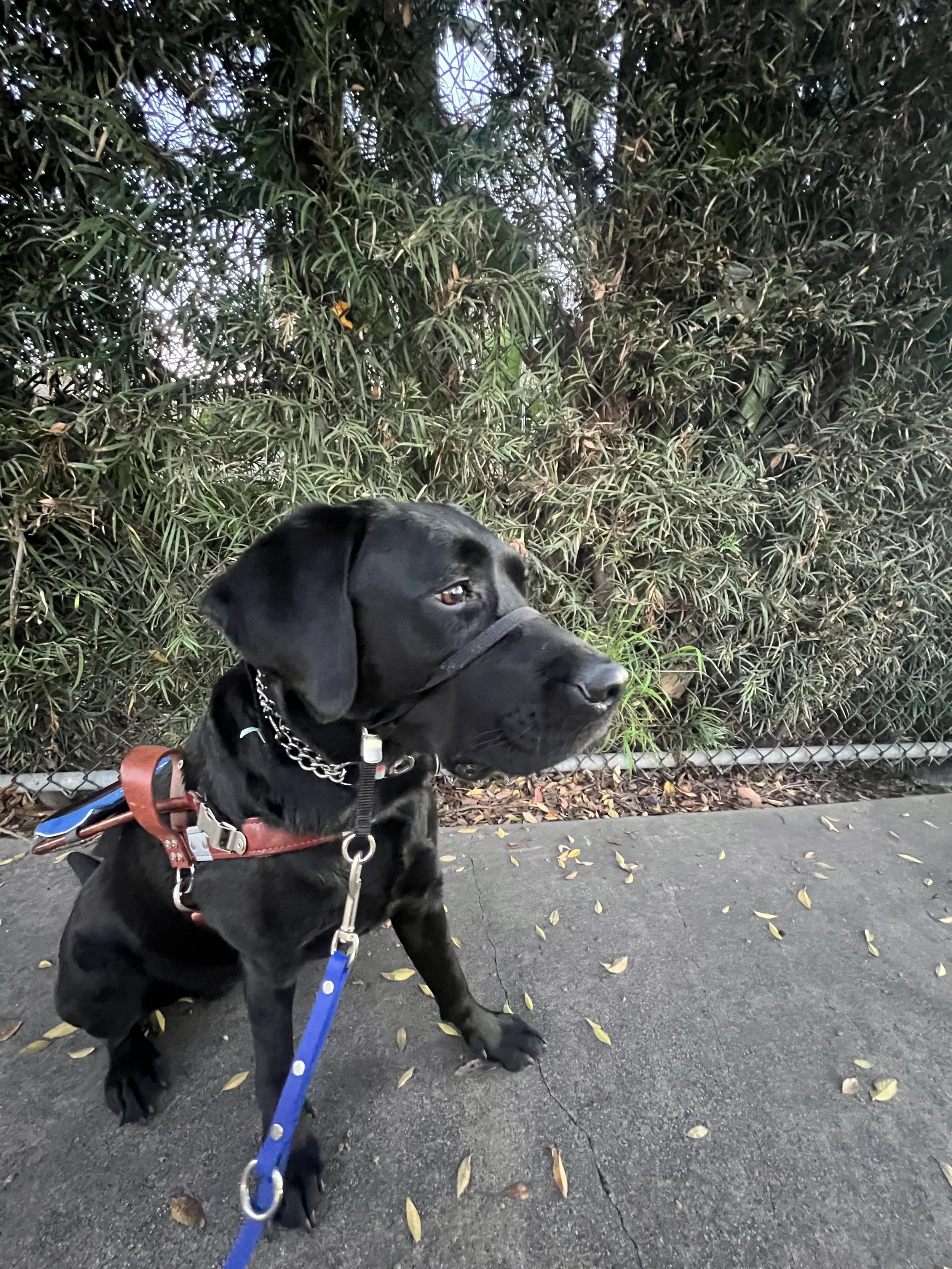What I wish employers and lead administrators knew about service animals
As October is Disability Employment Month I thought it would be a good idea to share some of the things that I wish employers and lead administrators would keep in mind as it relates to service animals in the workplace.
They should not have bathroom accidents in the office:
As I was in my first day of class during guide dog school one of my supervisors sent me a text along the lines of “One of the people that we work with just asked me what we would do if your dog had an accident in the office? I went on to tell them that this would not happen and if it did you would clean it up.” I share this story to say if something like this were to happen in your office with a service dog, the handler is responsible for cleaning up such a mess. In most cases to prevent this the service dog handler should have their dog on a schedule making it predictable as to when the dog would have to go to the bathroom. This is also why it's important to give the service animal handler additional breaks to take care of such needs.
Eve sitting in Lindsay’s cubicle at work.
They are not the office therapy dog:
This topic came about after one of the student affairs professionals asked if Eve could step in as a therapy dog during finals to help our students with the stress of finals. I will say it here just as I told them, absolutely not as their training is somewhere around $50,000 to $75,000. If I or others were to add therapy dogs to our dogs job description they are bound not to work effectively for us.
Head collar:
In some situations a service dog may wear a collar around the dog's mouth and above the nose. This is not a muzzle rather a Head Collar or Gentle Leader. Some teams will use this to achieve better head control and curb sniffing.
Eve sitting in harness using a head collar.
They are not robots or a GPS:
Guide dogs are not robots and do not always know where we need to go. It’s the job of the handler to know where we need to go. Our dogs may not take the same paths that we would walking, rather they are trained to take the safest path to get us to a given destination.
New dogs take time to get the routes and routines down:
You may be working with an employee that is currently working a service animal, but might need to retire them at a certain point. Once a new dog comes on scene it is going to take time for the handler to teach the new dog the routes and routines. Give the team time and space to work through their individual growing pains. With time it will and does get better.
Fear of dogs is not a reason to limit us access to events or locations we need to get to to complete our jobs:
On occasions when working with new lead administrators I have often been told that I cannot go into areas because students or teachers are afraid of dogs. In these situations, I let the administrator and any other adults that may be working in a given room that fear is not a reason to limit me access to given classes to provide service to my students, rather I will place my dog on tye down in the farthest corner from those that are afraid, so that Eve does not disturb the given person
Appropriate questions that may be asked of an employee:
What is your dog's name?
How long have you had them?
How long will they work for?
What breed are they?
When did you get them?
Can I pet your dog?
Did you train your dog?
How often are they groomed?
Inappropriate questions that can be asked of an employee:
Can I feed your dog?
Can your dog be left home for the entirety of the workday?
Will they bite?
Will they go to the bathroom in the office?
Do they have fleas?
Eve napping in her Mickey Mouse bed in the office.
For more information on how to approach a service animal in the workplace there is great information on the Job Accommodation Network (JAN) when searching Service Animal.


